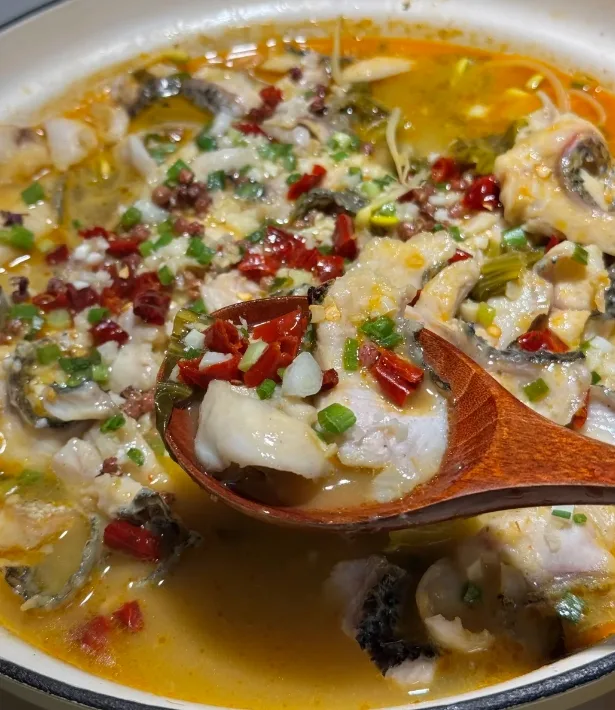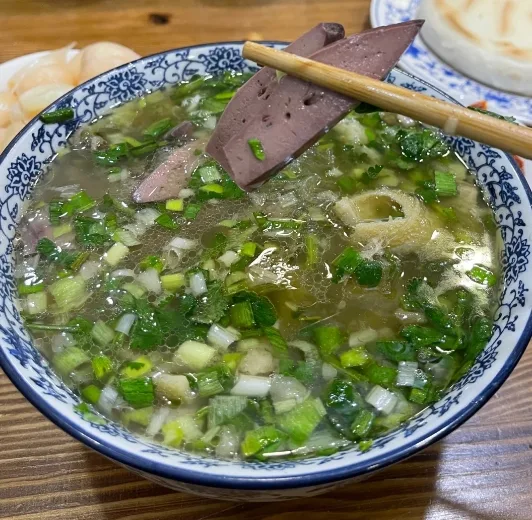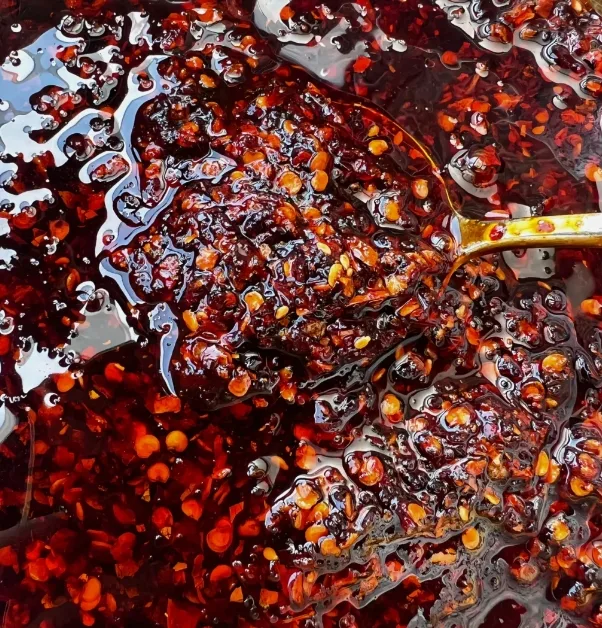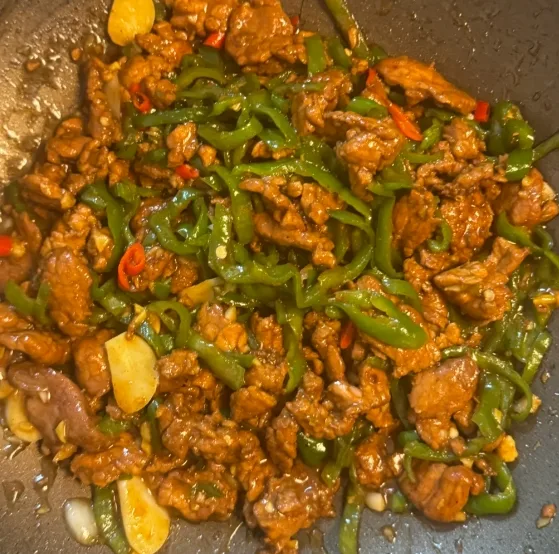Dried chili pepper is a processed chili product made from red chili peppers through natural sun-drying or artificial dehydration. It is also known as dried chili, sun-dried chili, or dehydrated chili.Love Chinese food? Dried chilies are a must-have spice!First, join me in learning about dried Chinese chili peppers.
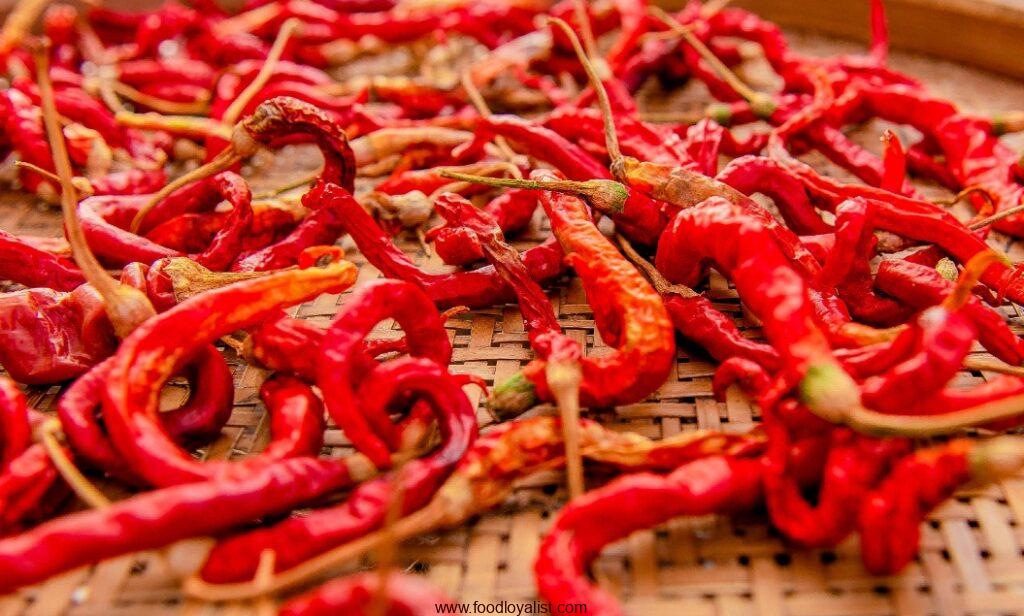
How to choose dried chili peppers
Why does the same chili oil dressing taste different at home compared to restaurants? The secret lies in the chili oil itself. Many people struggle to replicate the authentic flavor simply because they don’t understand the unique characteristics and uses of different dried chilies. Not all chilies are the same—their varieties differ significantly in flavor, heat, and aroma.
Today, let’s explore the 3 most commonly used dried chilies in professional Chinese cooking.
Indian Ghost Pepper (Bhut Jolokia)
Heat Level: ★★★★★ (Extreme)
The Indian Ghost Pepper, also known as “Insanely Spicy” or “Soul-Reaper Chili,” ranks as the second-hottest chili pepper in the world. Unlike other ultra-spicy peppers that deliver immediate burning pain, the Ghost Pepper has a delayed but intensifying heat—starting moderately but escalating to extreme levels after about 4 seconds, accompanied by severe discomfort.
Due to its extreme spiciness, it is primarily used in:
“Challenge-level” spicy foods (e.g., extreme hot wings)
Numbing-spicy dishes (e.g., spicy duck neck, hot pot base)
However, it is rarely used for chili oil in China because:
Low fragrance (lacks the aromatic depth of Chinese chilies)
Poor red color extraction (doesn’t produce vibrant red oil)
Overpowering heat (can ruin flavor balance)
You’ll mostly encounter it in Sichuan hot pot for an extra kick, but it’s not a staple in Chinese kitchens.
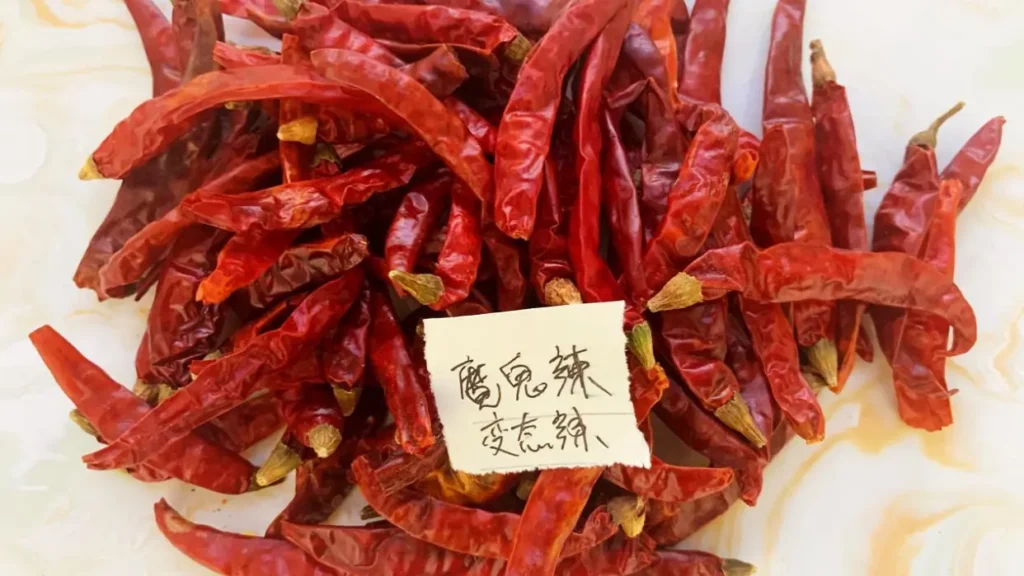
Hunan Dried Yellow Chili
Heat Level: ★★★★ (High)
The dried yellow chili resembles the size of Thai bird’s eye chili but with distinct features:
Thick flesh & fewer seeds
Golden-yellow color (unlike most red dried chilies)
Rare combination of high heat + strong aroma (most ultra-spicy chilies lack fragrance)
Culinary Uses:
Not ideal for chili oil (due to its yellow hue, which won’t create the classic red color)
Perfect as a supplementary spice (mixed into chili powder blends for extra heat and aroma)
Best for stir-fries (e.g., “spicy fried chicken,” “dry-pot dishes“) where both fragrance and spiciness are key
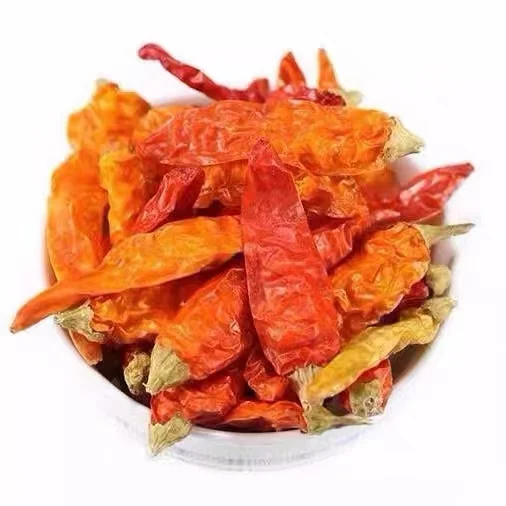
Chongqing Red Chili
Heat Level: ★★★ (Medium-High)
Red Chili is characterized by:
Thin skin & thick flesh (uncommon for medium-spicy chilies)
Low seed content (higher flesh-to-seed ratio)
Unique dark-red hue (almost blackish-red, unlike typical bright/deep red chilies)
Why It’s Prized in Chinese Cooking:
Perfect for chili oil: Produces a rich, deep red color and bold aroma without excessive heat.
Ideal for spice blends: Used in Chongqing hot pot base and “lazi” (spicy seasoning crumbs) for balanced heat and fragrance.
Versatile in stir-fries: Adds vibrant color and lingering spiciness to dishes like “spicy boiled fish.“
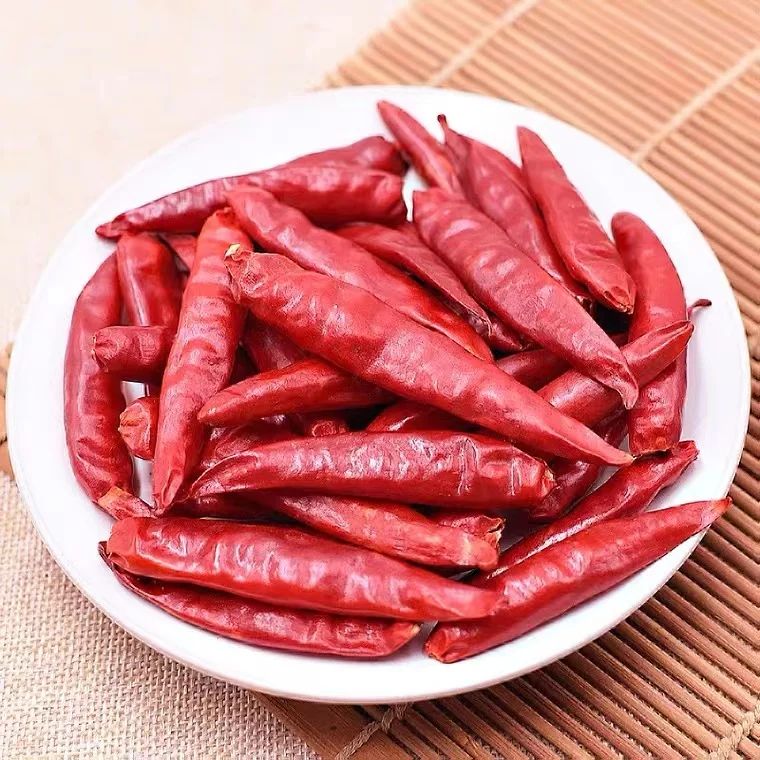
How to dry chillies at home?
Making dried chili peppers at home isn’t complicated—you can easily do it yourself!
Step 1: Select Your Chilies
Choose 500g (about 1 pound) of fresh chilies according to your preferred heat level
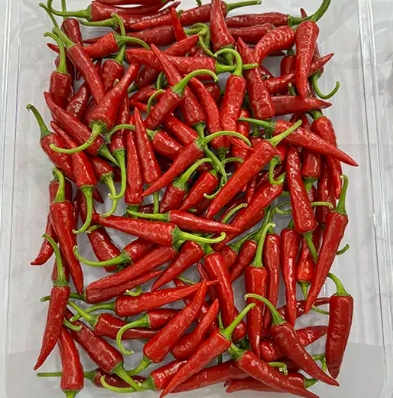
Step 2: Thorough Cleaning
Rinse the chilies under cool running water
Gently rub to remove any dirt or debris
For extra cleanliness, soak in vinegar water (1:3 ratio) for 5 minutes
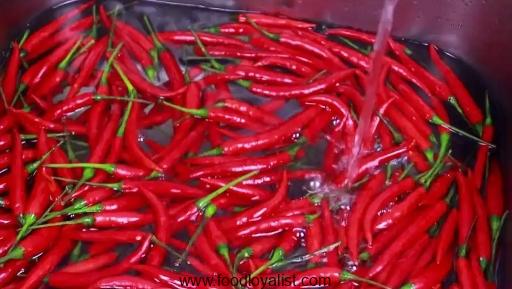
Step 3: Proper Drying
Place washed chilies in a colander or strainer
Shake gently to remove excess water
Pro tip: Leave them in a well-ventilated area for 30 minutes to air-dry completely
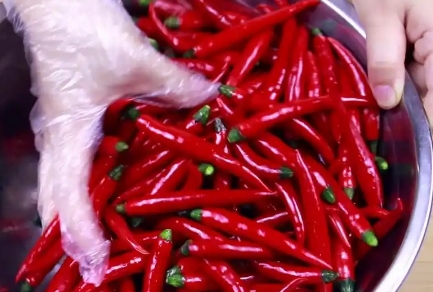
Step 4: Sun-Drying Process
Spread chilies evenly on a clean drying rack/mesh tray (avoid overlapping)
Place in direct sunlight for 3 full days (optimal conditions: 30-35°C/86-95°F)
Nighttime care:
Bring indoors before sunset (prevents dew absorption)
Store in a dry, ventilated space (e.g., covered porch with fans)
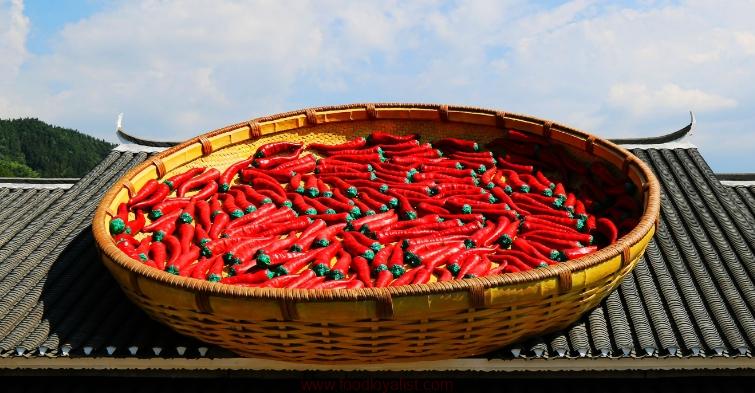
Key Notes:
① Always wear gloves when handling hot varieties
② Ensure complete dryness before proceeding to the next steps
③ Organic chilies require more thorough cleaning
video
How to Store Dried Chili Peppers – Best Methods
Short-Term Storage (1-3 Months)
Airtight Containers
Use glass jars or food-grade plastic containers with tight seals.
Add a silica gel packet to absorb moisture.
Store in a cool, dark cupboard (away from heat and sunlight).
Vacuum Sealing (Best for Humidity Control)
Removes air to prevent oxidation and mold.
Ideal for whole dried chilies (not powder).
Long-Term Storage (6-12 Months+)
Freezer Storage (Best for Flavor Retention)
Place dried chilies in a freezer-safe bag or vacuum-sealed pack.
Prevents insect infestation and maintains spiciness

